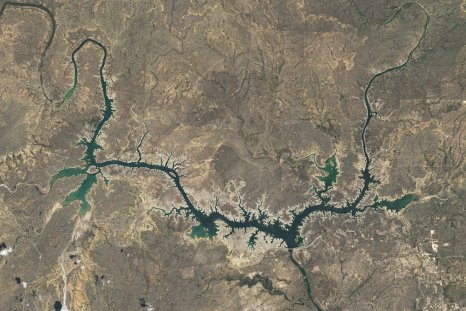Researchers have shed new light on the construction of a giant prehistoric stone tomb revealing it be a "unique example of creative genius and early science" among Neolithic societies.
The findings, published in the journal Science Advances, suggest that the builders of the Menga dolmen in southern Spain possessed advanced engineering knowledge beyond what was previously understood. This challenges the traditional view that construction techniques employed in the Neolithic, otherwise known as the New Stone Age, were "primitive" in nature.
Instead, the study points to a relatively sophisticated understanding of physics, geology, architectural principles and engineering techniques nearly 6,000 years ago.
The "remarkable" Menga dolmen, located in the Antequera municipality of southern Spain, is one of the largest and most significant megalithic structures from the Neolithic period.
A dolmen is a type of single-chamber prehistoric tomb constructed using large stones, known as megaliths.
Constructed between 3800 and 3600 B.C.—around a thousand years before the oldest known pyramid in Egypt—the Menga dolmen consists of 32 massive stones forming a roof, walls, and pillars, with a total weight of approximately 1,140 tons. Menga, the oldest of the great dolmens on the Iberian Peninsula, has long intrigued archaeologists and historians alike because of its sheer size and the apparent complexity of its construction.
"We have been studying megalithism in Antequera for more than 10 years and we have always wondered how such a large monument could have been built almost 6,000 years ago," the study's lead author José Antonio Lozano Rodríguez of the Canary Islands Oceanographic Center, Spain, told Newsweek, explaining the motivation to conduct the research.
In the study, which incorporates analyses from various disciplines, including archaeology, Rodríguez and his team uncovered evidence of "sophisticated" construction methods that involved an understanding of simple but fundamental scientific concepts, such as friction and geometry.
The research has shed light on how the big stones that make up the monument were placed, revealing a "very elegant" construction procedure that differs radically from previously held beliefs about how the dolmen was erected.
For example, it was previously thought that the orthostats of the dolmen—large upright stones used to construct the walls in many kinds of megalithic tomb—were placed from the outside of the monument by sliding them on foundation ramps. But the study revealed that the building was, instead, constructed from the inside and without any use of ramps.
They observed that the capstones, which form the roof of the dolmen, consisted of soft-to-moderately-soft rocks that required careful handling to avoid damage during transport. To achieve this, the builders likely used a specialized trackway designed to minimize friction and preserve the integrity of the stones.
"For this, they designed the monument buried in the ground, thus avoiding the need to build large ascending ramps to place the gigantic stones that make up the capstone," Rodríguez said.
The fragile rocks were transported by sled, with the ground prepared carefully to preserve them from unnecessary movements, according to the researcher.
Among the capstones is one, referred to as No. 5, that weighs 150 tons—making it the heaviest known from a prehistoric dolmen.
"This slab is carved on its surface in the form of an arch, with the intention of generating the first stress relief arch known to mankind," Rodríguez said. "The monument was designed for its continuity over time…some orthostats rest on top of others, with the intention of distributing the stresses generated by the weight."
In addition, the researchers found that the supporting wall stones were placed with millimeter-scale precision, creating a trapezoidal effect that added stability to the structure. Many of these wall stones interlocked through lateral facets, and both wall and pillar stones were wedged into the bedrock, further enhancing the dolmen's durability.
These findings led the authors to conclude that the builders of the Menga dolmen were employing what the authors refer to as "early science" in their efforts to build an enduring monument.
"It is impossible to understand how a monument as sophisticated as Menga was built between 3800 and 3600 B.C. without resorting to a notion of 'early science,'" Rodríguez and his colleagues said in a press release. "Our findings run entirely counter to the idea of 'primitiveness' or 'rudeness' that for a long time has underpinned both the popular and scientific understanding of Neolithic societies."
The implications of this research extend beyond the Menga dolmen itself, according to authors.
"Our research reveals an early convergence of knowledge in the southern Iberian Peninsula, which may have served as a precursor to advances later observed in other European and Mediterranean societies and civilizations," he said. "From all this we deduce the existence of early scientific knowledge, of extraordinary inventive brilliance among Neolithic communities in the southern Iberian Peninsula almost 6,000 years ago."
Do you have a tip on a science story that Newsweek should be covering? Do you have a question about archaeology? Let us know via science@newsweek.com.
References
Lozano, J. A., García Sanjuán, L., Jiménez-Espejo, F. J., Álvarez-Valero, A. M., Arrieta, J. M., Fraile-Nuez, E., García-Alix, A., Montero Artus, R., & Martínez-Sevilla, F. (2024). Early science and colossal stone engineering in Menga, a Neolithic dolmen (Antequera, Spain). Science Advances, 10(34). https://doi.org/10.1126/sciadv.adp1295
Disclaimer: The copyright of this article belongs to the original author. Reposting this article is solely for the purpose of information dissemination and does not constitute any investment advice. If there is any infringement, please contact us immediately. We will make corrections or deletions as necessary. Thank you.



